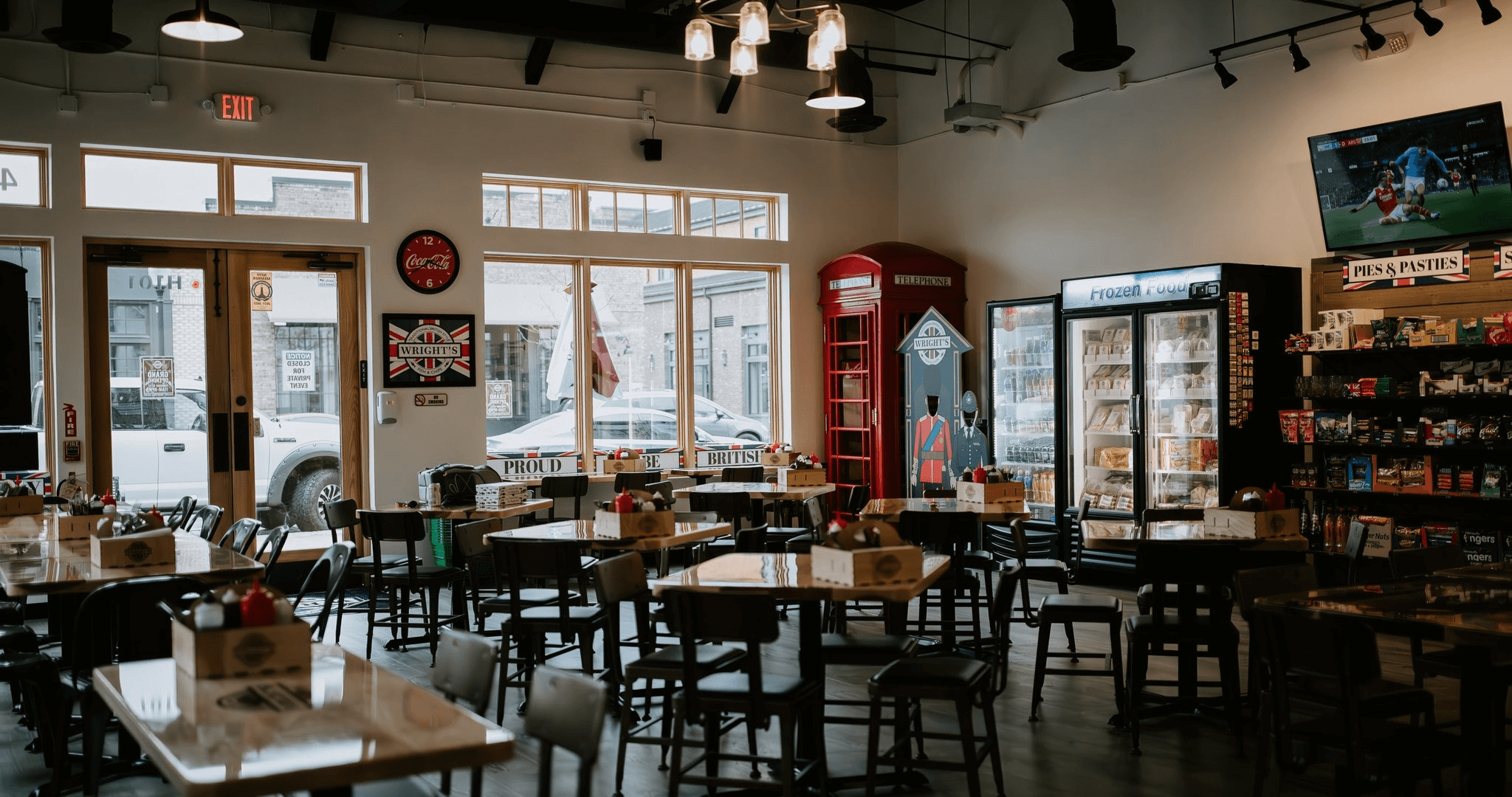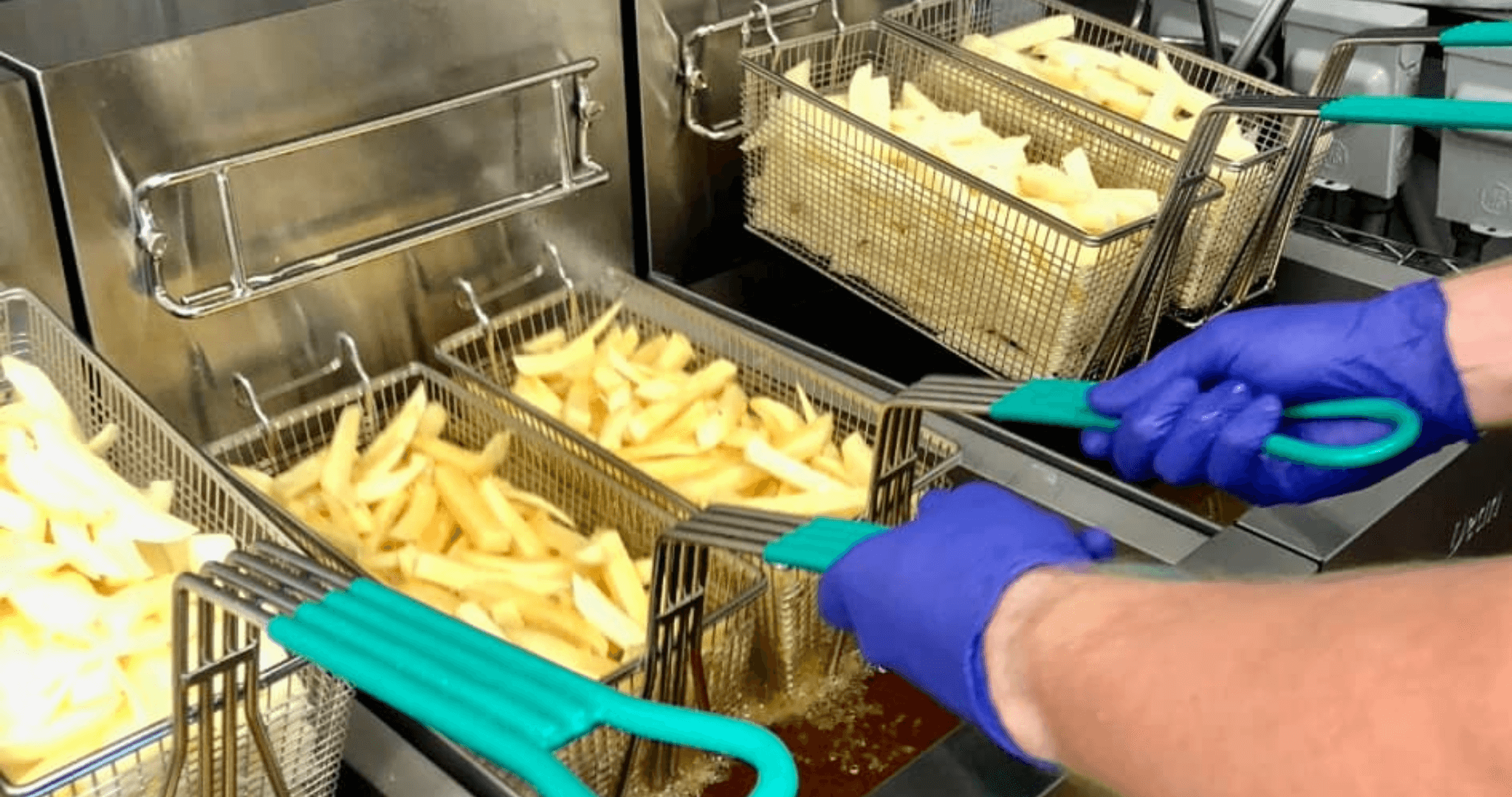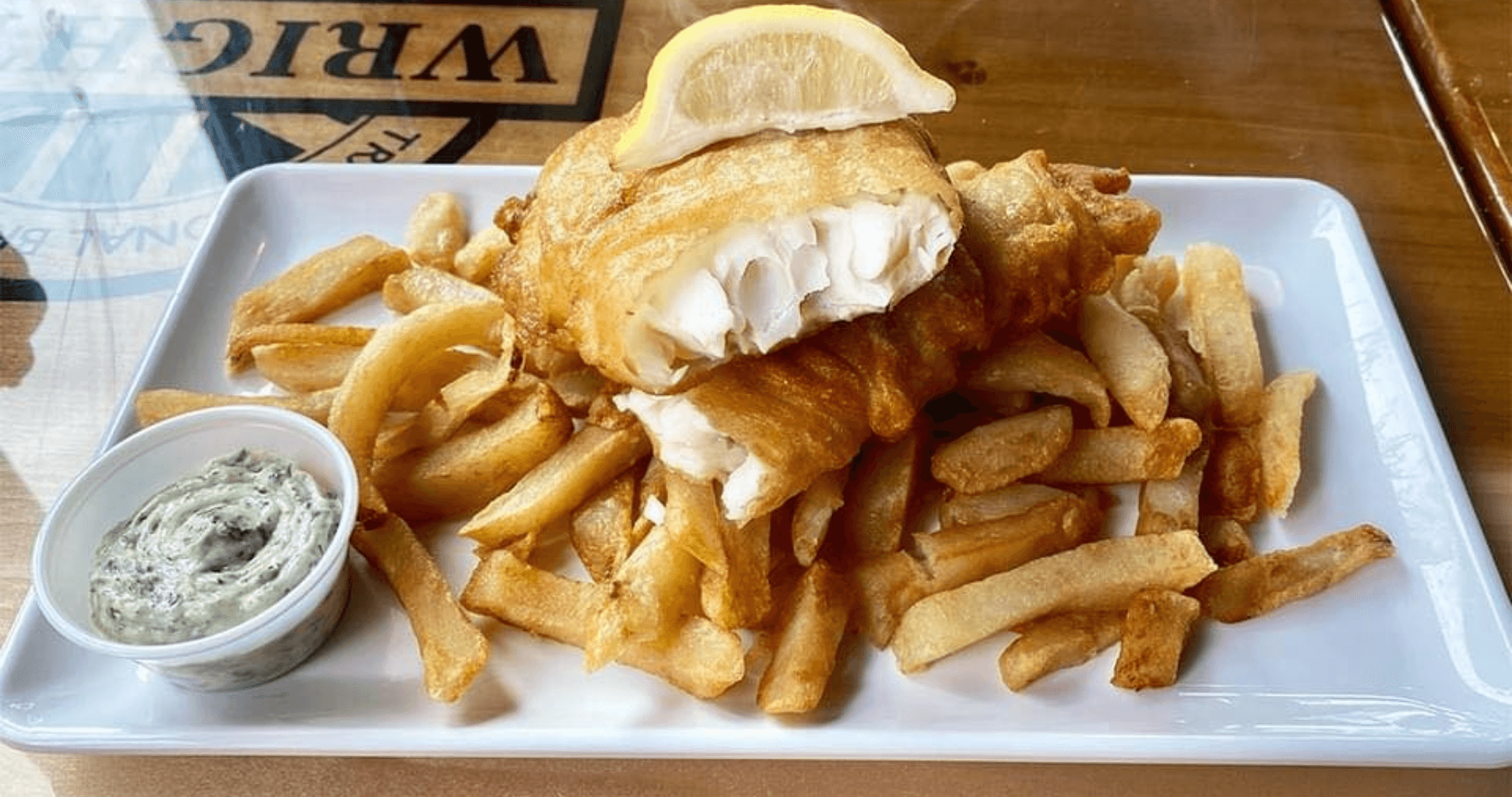Fish & Chips the Wright way
Posted by Emily on 24th Jan 2024 Reading Time:
“I would never have thought of doing this in the UK because there are so many fish and chip shops, but I came to the States and there was a niche. I grabbed it, ran with it and we’ve been really successful,” says Welsh-born Chantelle Wright, who opened Wrights Fish & Chips in July this year in Cumming, Georgia, just north of Atlanta.

At 1,000 square foot, the chippy is considered small by American standards, seating 36 inside plus a further 24 outside. And it’s not in your usual high traffic location either, instead it’s a standalone unit next to a small office block. Yet it’s already creating a reputation for itself, serving well over 1,000 meals across its takeaway and restaurant with some customers driving eight hours and crossing states to eat here.
So what makes it so special, after all there are plenty of places locally selling fish and chips? Quite simply, it’s the authentic British chippy experience that Chantelle’s jumped through many a hoop to achieve.
For a start, Wrights imports around 90% of its products from the UK, from batter, marrowfat peas, gravy and curry to the cans of drinks, crisps, chocolate and HP sauce. Apart from cod, which comes from the Barents Sea, the potatoes and the vegetable shortening used for frying almost everything else is shipped over - or flown over if it’s needed urgently.
Chantelle comments: “A lot of the products here are totally different to the British versions. Here, Coca-Cola, for example, is made with fructose, whereas British products are made with proper sugar. I had people coming in and asking if we had a proper can of pop, so I started importing Dandelion and Burdock, Lilt, Fanta Orange, Fanta Lemon and Tango. Heinz Tomato Ketchup is a completely different taste and colour too.”
Sourcing products from the UK naturally brings its own set of challenges. Chantelle has to order three months in advance, factor in the time difference when dealing with suppliers and, of course, consider the additional shipping and import costs.
“Unfortunately, I do have to put the prices of the British products onto my customers,” she admits. “Local ingredients would be cheaper, but it wouldn’t be authentic and I’m the only person in America that is doing fish and chips completely authentically. I think that’s why fish and chips has never really taken off here. A lot of the time the fish is whiting and the chips are frozen French fries.”

To bring the British chippy experience to the US, Chantelle uses Ceres Natural Batter Mix, its Chip Shop Gravy Mix and Curry Sauce as well as Ceres Pea Seasoning, which are shipped over along with bags of marrow fat peas. Chantelle comments: “I love Ceres’s batter, it’s so easy to work with, it retains the air bubbles and it’s crispy and light.
“Americans have never heard of mushy peas, and marrow fat peas aren’t grown over here so they are a bit of a treat. I always tell customers the process and how the peas are made with love. Americans love them.”
Some items Chantelle’s had no choice but to source locally, pies and sausages for example are made bespoke by a butcher as importing meat is illegal. Other products meanwhile have been more difficult to source, take saveloys as most US butchers only deal with raw meat. And while the potatoes she uses might be top grade American, in a nation famous for French fries finding a variety that would stand up in a British chip shop wasn’t easy.
“I had to do a lot of work and research into potatoes as American varieties are either stored underground, which makes them damp, or refrigerated so they produce more sugar that caramelises and give a browner chip,” Chantelle explains. “Stelios was a fantastic help here, I showed him photos of some chips that were really brown but which tasted fine and he worked out they were probably double growth potatoes - they had been left in the ground too long. I was able to go back to my supplier and say I didn’t want that brand again. Stelios has gone out of his way to help me big time, we’re not just a customer, we’re friends now.”

The frying equipment has also given Chantelle a fair few headaches. With no gas into the building and only single-phase electricity, she had no choice but to install three standalone electric fryers. With each one pumping out 40lb of product at a time, they are keeping up with demand but they’re no replacement for the frying ranges used back home.
“Our frying ranges aren’t like your frying ranges in the UK,” says Chantelle. “I’d love to import one but it’s a bit tricky because it would have to confirm to NSF or ANSI standards. I found this out after I imported a chipper and, although it was CE marked, the health inspector wouldn’t accept it.”
With Chantelle believing the formula is now very-much nailed down, she is looking at the possibility of super-sizing Wrights and rolling it out across America, not just to hundreds of sites but potentially thousands via a licensing agreement.
“I know it’s ambitious but the whole thing has been a huge gamble and we’ve done so well already.”

